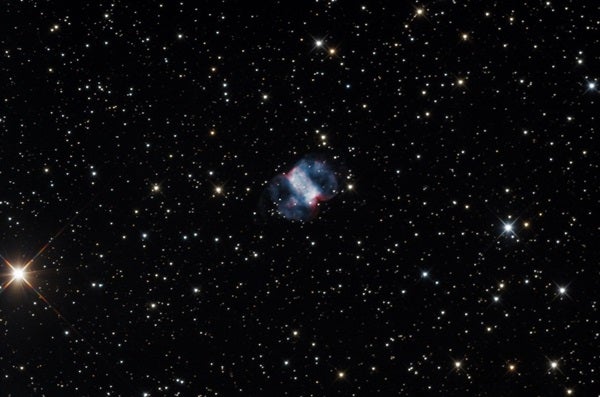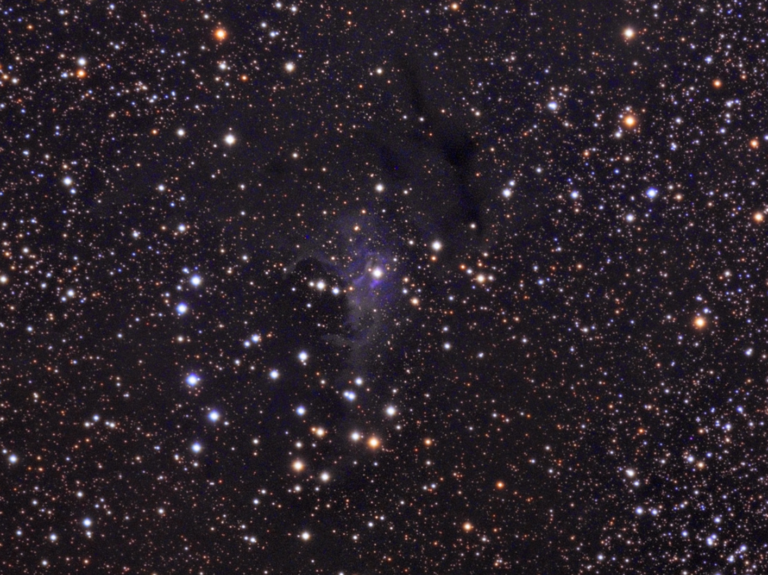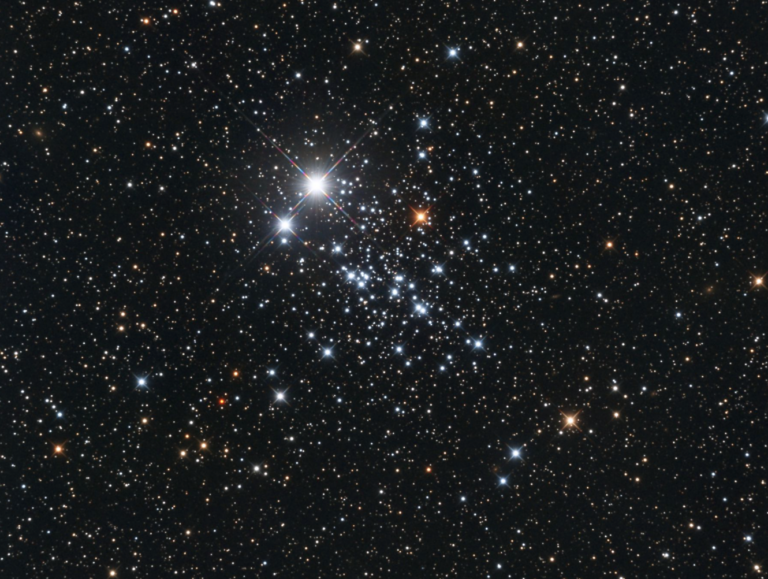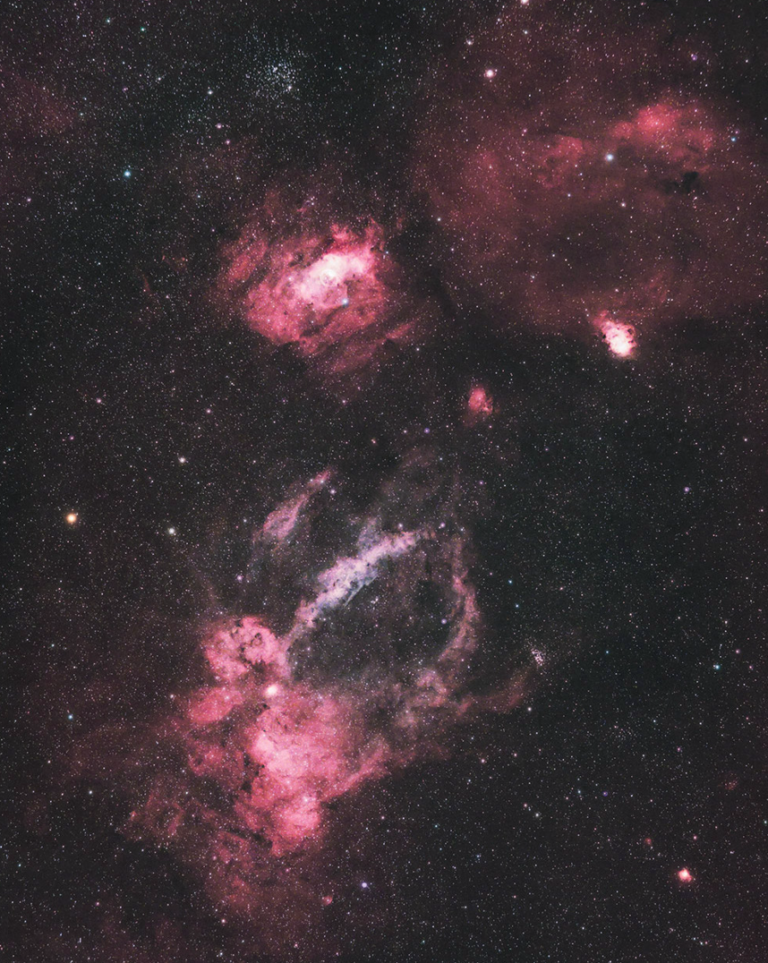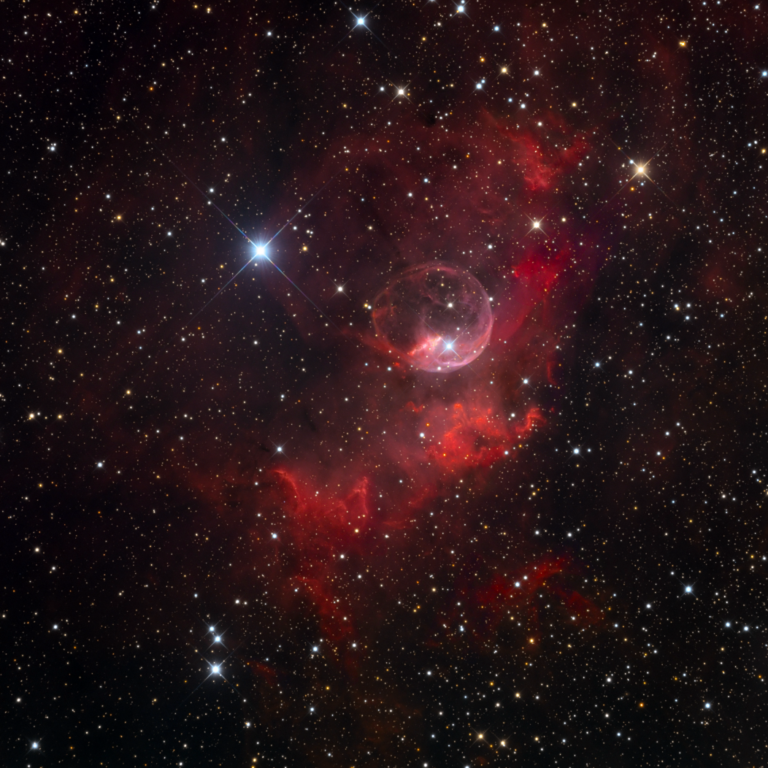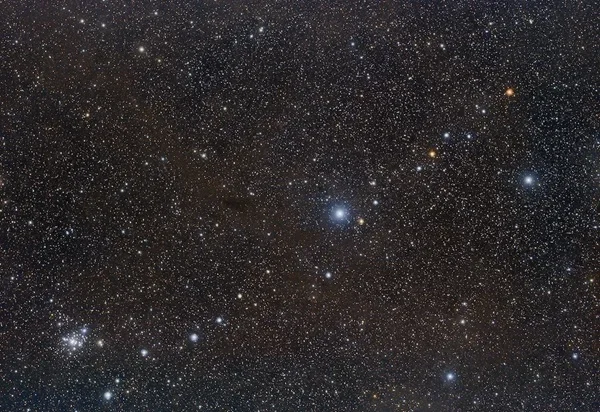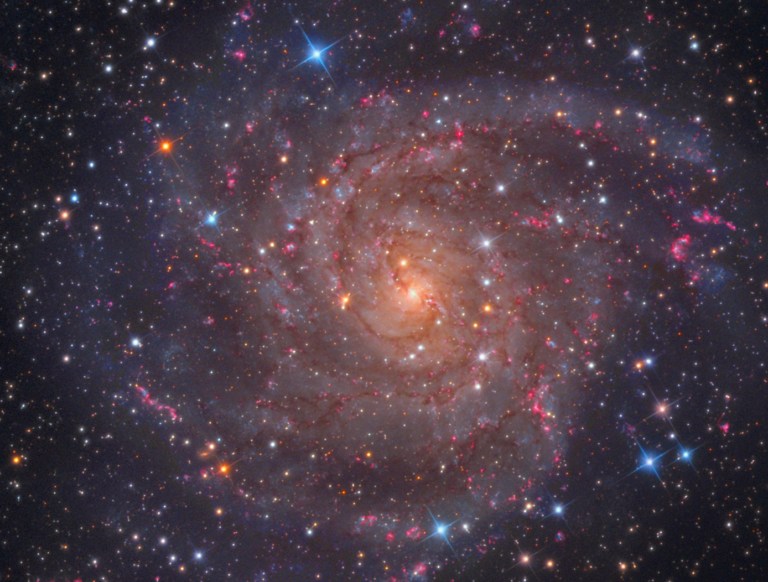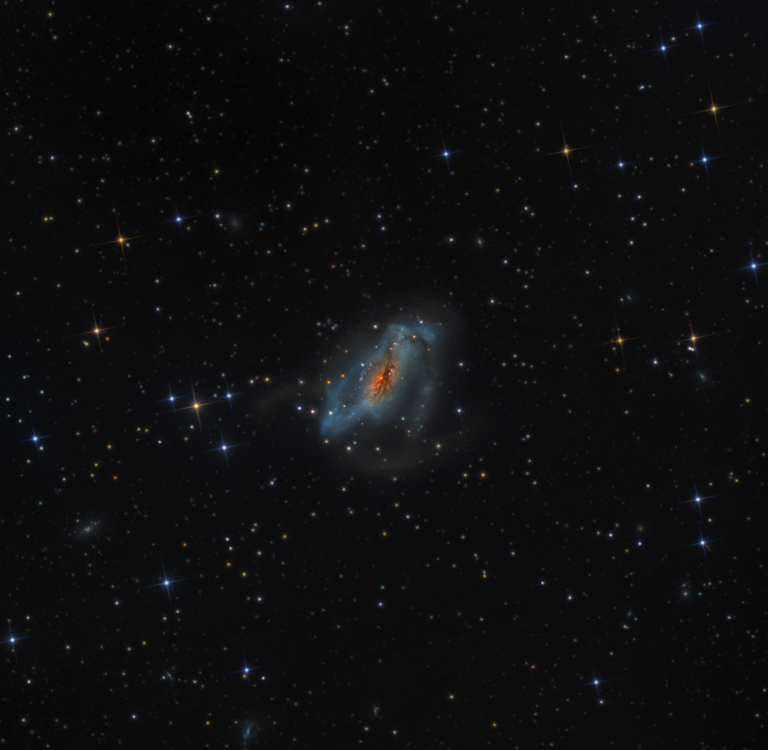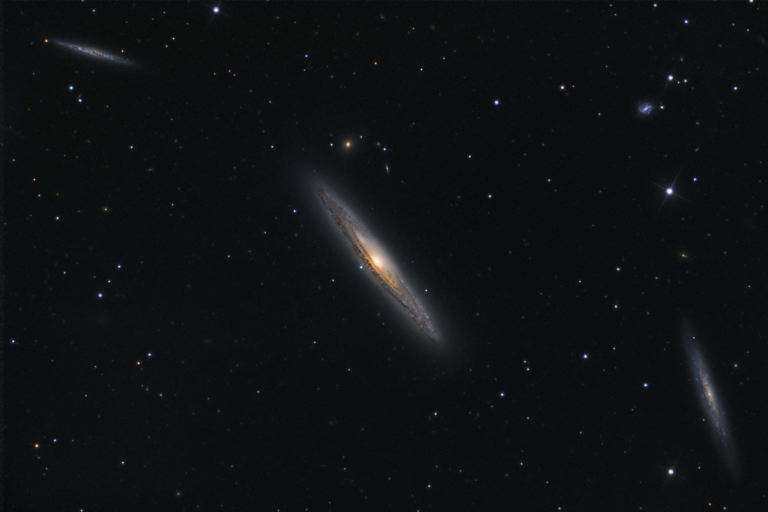While Perseus is best noted for its wealth of clusters, including the famous Double Cluster, it also harbors the exotic and diminutive beauty M76 — one of only four planetary nebulae in Charles Messier’s catalog. Commonly known as the Little Dumbbell Nebula, this expanding shell of gas from a dying Sun-like star resembles Vulpecula’s Dumbbell Nebula (M27) in shape, but not in brightness or size. 10th-magnitude M76 is three magnitudes fainter and three times smaller than M27 — though it is nearly twice as far away.
Messier’s contemporary Pierre Méchain discovered the Little Dumbbell Nebula on Sept. 5, 1780, communicating to Messier that it is “small and faint” without any stars. To this day, the nebula still causes visual observers to marvel at its subtleties.
In 1787, William Herschel found that M76 consists of two unresolved nebulae in contact, which became known as NGC 650 (the south component) and NGC 651 (the northern component). In 1891, Isaac Roberts suggested that the object’s peculiar rectangular nature is due to observers seeing a ring edgewise. He was right: M76 is a bipolar planetary nebula, with a dusty, doughnut-shaped ring (or torus) that we see nearly edge on. The butterfly wings extending from the torus are expanding bubbles of gas ejected from the central star’s polar regions.
M76 lies less than 1° north-northwest of yellowish Phi (ϕ) Persei. Its oft-quoted magnitude of 12.2 is much too faint. Use moderate magnification to seek it out and expect a 10th-magnitude, small, diffuse glow (oriented northwest-southeast) that swells to about 3′ with averted vision. Small to moderate-sized telescopes will show it as a uniform rectangle of light separated by a narrow lane of darkness. Careful scrutiny at high power will reveal its hollow butterfly wings. The central star is a challenge, shining around magnitude 16.0.
Make sure to explore Astronomy’s full list of 101 cosmic objects you must see. New entries will be added each week throughout 2022.
To get the latest astronomical news and observing content delivered directly to your door, subscribe to Astronomy magazine today!

